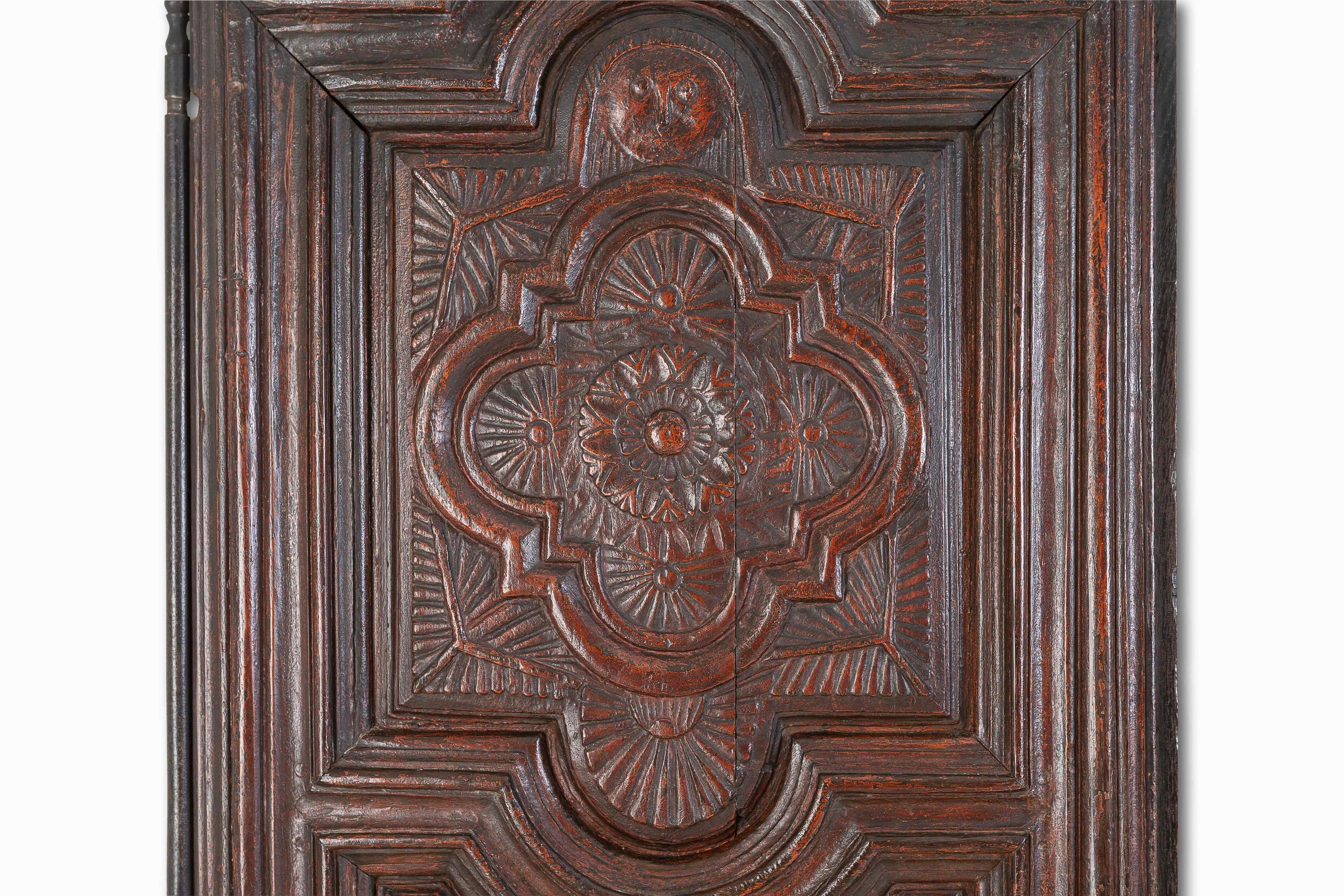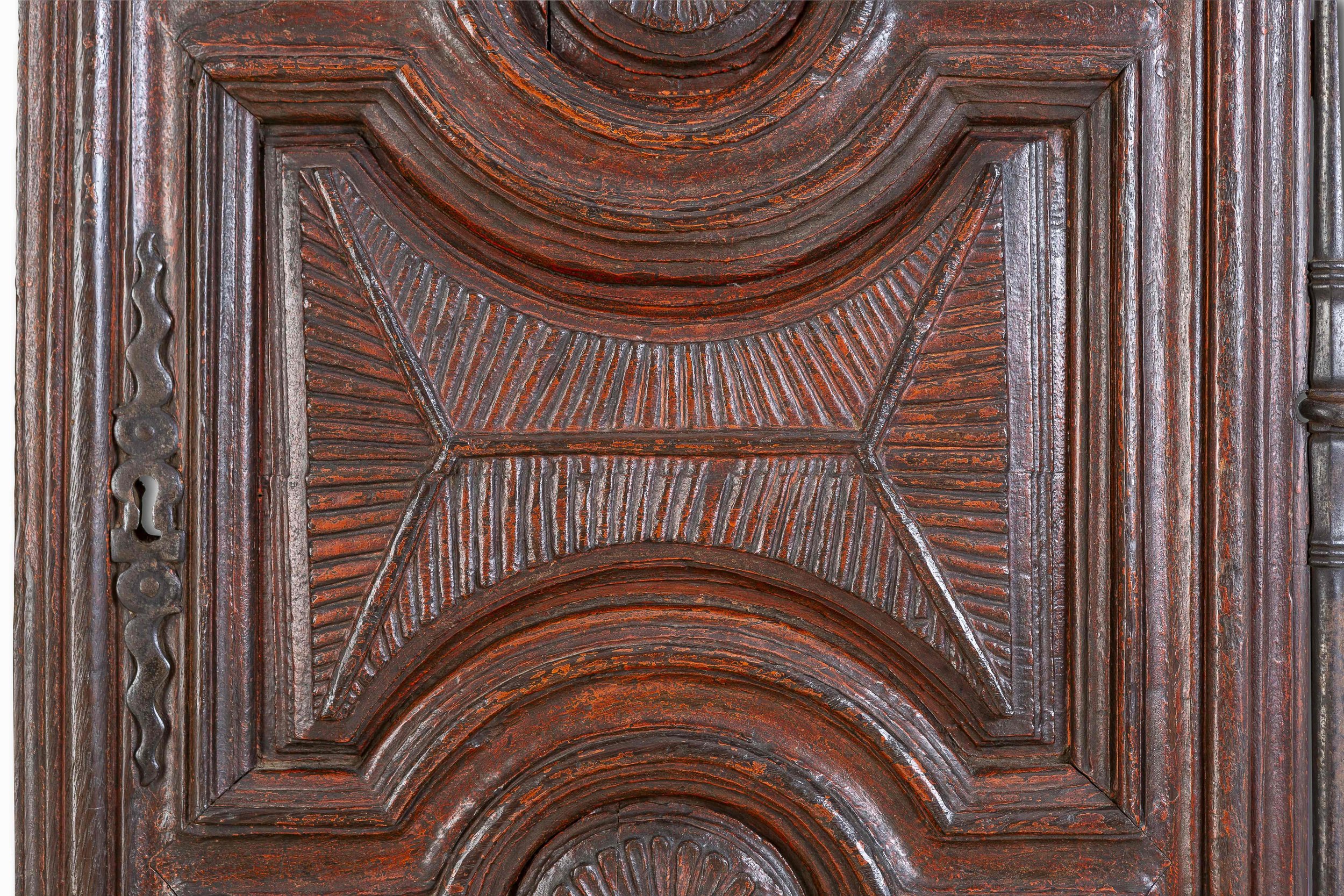BRETON DOORS 18th







BRETON DOORS 18th
// OAK-CHESTNUT
// L. 4 x W. 57 x H. 142 CM
// UNIQUE PIECE
To the generations which follow one another, a cupboard opens as well its doors as those of the memory, in all its subjectivity. If it is the work of a craftsman, the true piece of furniture bridges and engraves deeply in its unique form the stories of individuals who are as much just as much. It becomes a narrative referent, a geographical and temporal landmark, a marker around which to preserve and weave around which to preserve and weave stories.
These doors dated from the end of the 18th century are the prelude to the golden age of the wedding wardrobe which flourished in the 19th century. In the working classes, it excels in articulating the ephemeral and the perennial, the festive event and the calm succession of years. It makes the history of those who were long deprived of it. It is the furniture of prestige par excellence, the furniture of a lifetime by its size, its financial and symbolic value. These two doors are the testimony of it: massive, patiently and delicately carved, they are not satisfied with natural and ordinary wood but are draped with a sumptuous oxblood red patina. The wedding wardrobe takes pride of place in the home and reigns supreme. It establishes the new couple in society, indicates their social rank, their wealth or humility, their country or urban setting, their inclination to reflect a regional, social or artistic identity. The time and cost of manufacture dictate the calendar of the wedding: the date is decided according to the progress of the carpenter or the cabinetmaker. The wardrobe contains the bride's trousseau and the value of the piece of furniture echoes the costs incurred for the celebration. Once the party is over, the wardrobe is a faithful snapshot of the pomp and circumstance of the occasion.
These two doors, regularly opened and closed, remind us of the refined wedding. On the upper panel of each door is placed in majesty the bride on the left, the groom on the right. The four-lobed form becomes a body and emerges from a bouquet of ferns. On each door, the motifs of limbs, rosettes and flowers distinguish with virtuosity the female door from the male one. Without commenting on the practical or aesthetic utility of the oxblood patina, let's remember that in the 19th century, red was the festive color of special occasions for the working classes. Pants, jackets and wedding dresses were red before becoming, at the end of the century, black for some, white for others. The red patina of wedding wardrobes, as useful or aesthetic as it may be, may also revive the memory of a unique and colorful day. Considered in our contemporary context, the wedding wardrobe awakens values that were despised and then suddenly rehabilitated: sobriety and parsimony. Virtues of reason rather than punishment. The wardrobe, once religious or aristocratic, now speaks a universal language, which differentiates it from scholarly luxury. Our Table with its secular architecture does not affirm anything else.
Text by Marielle Brie
GALERIE MICA COLLECTION
